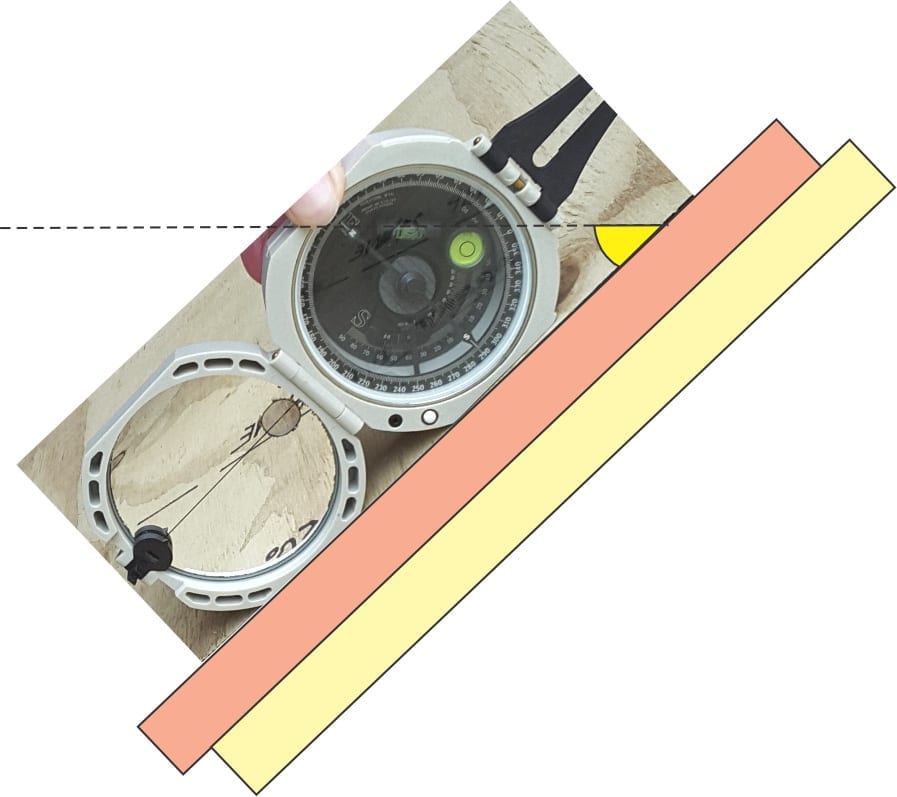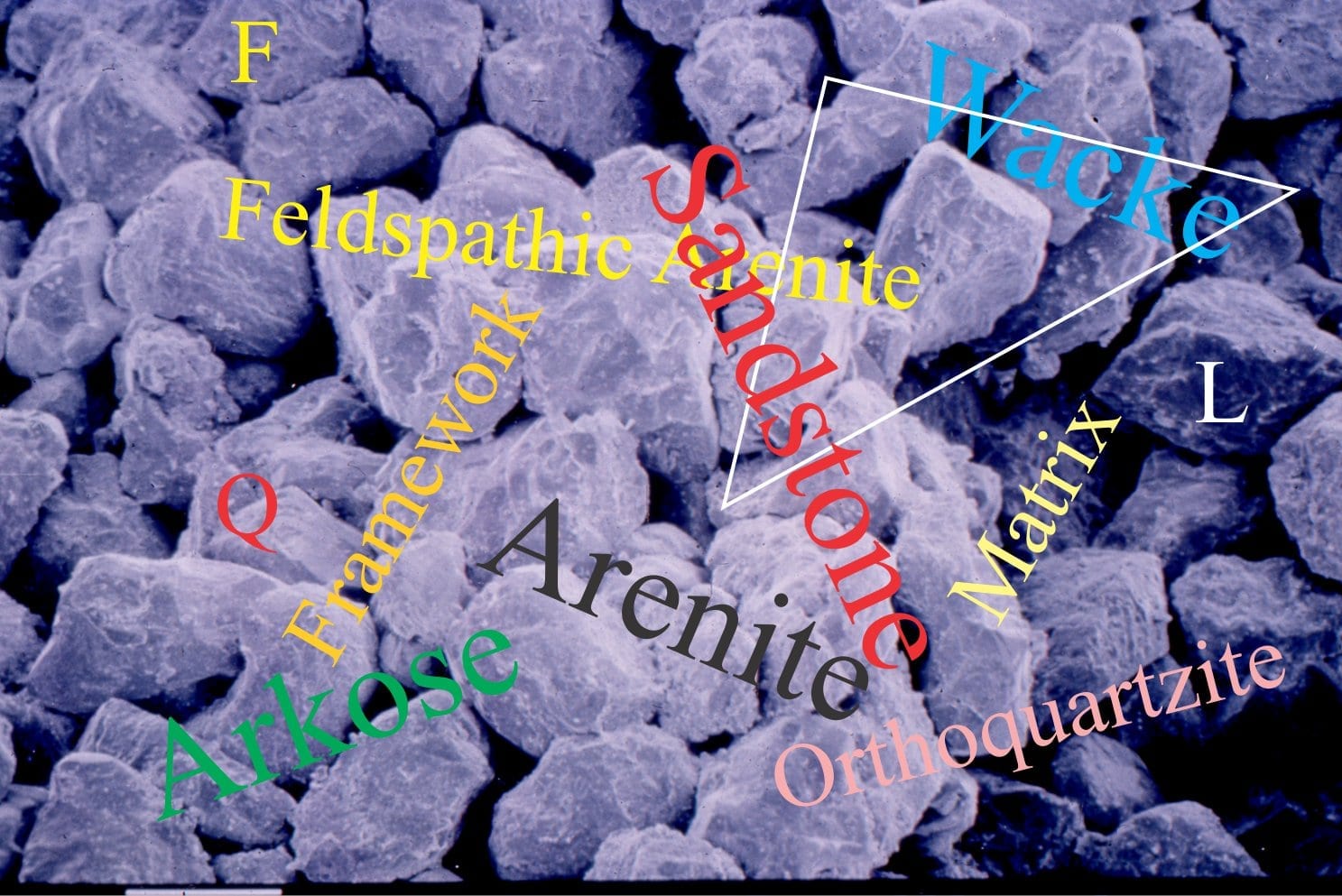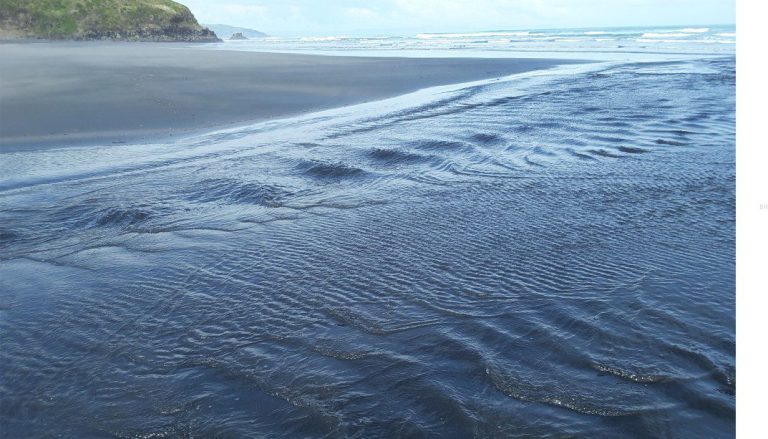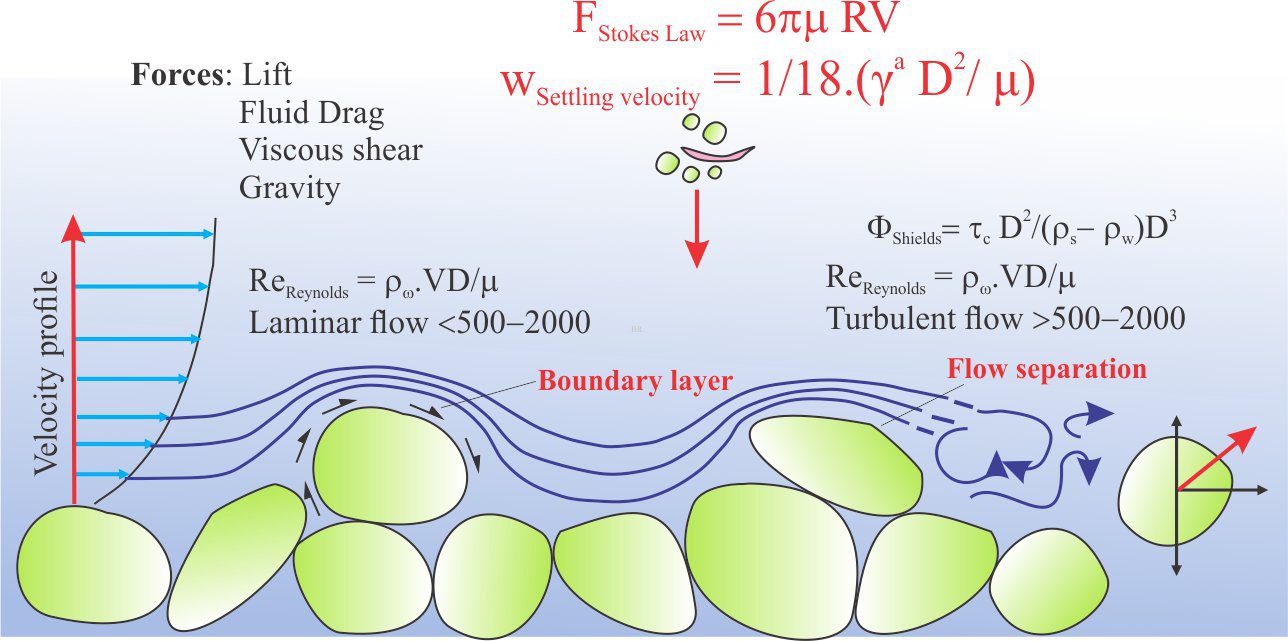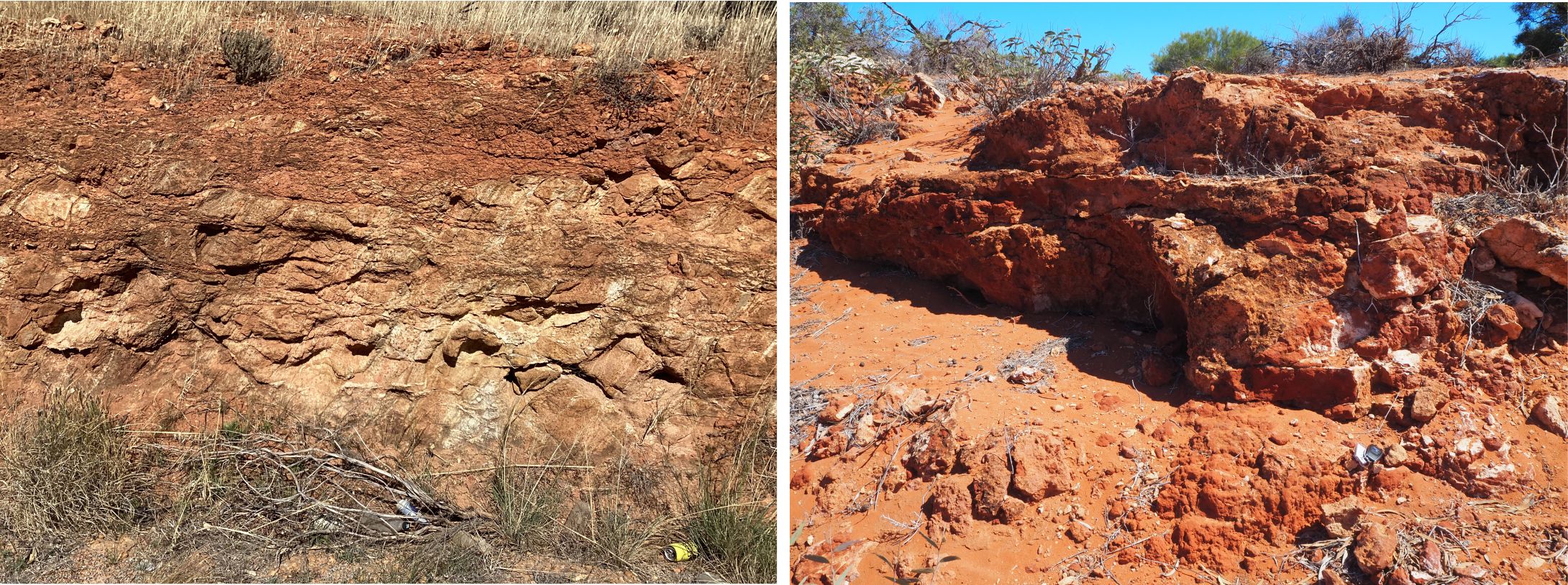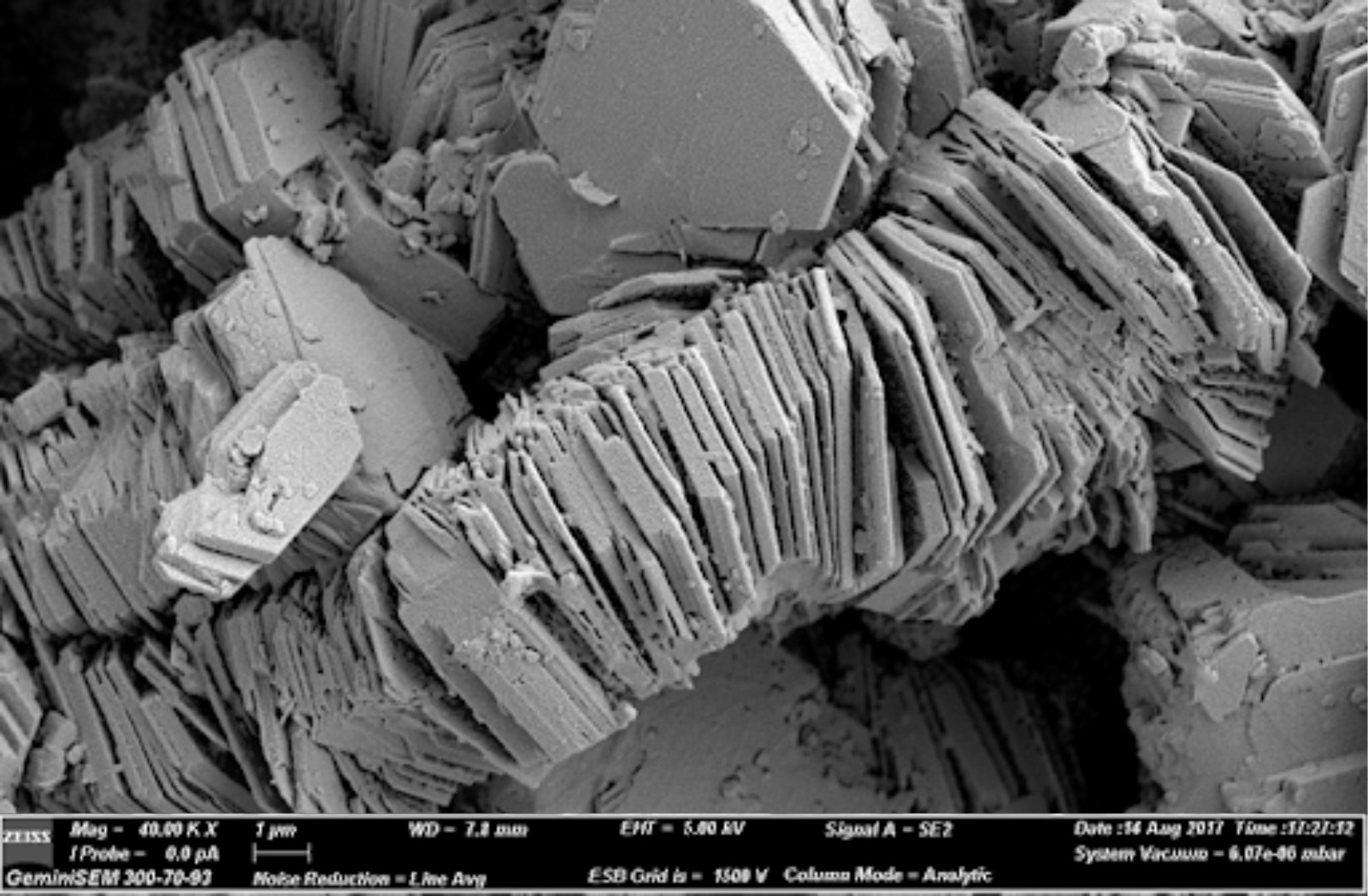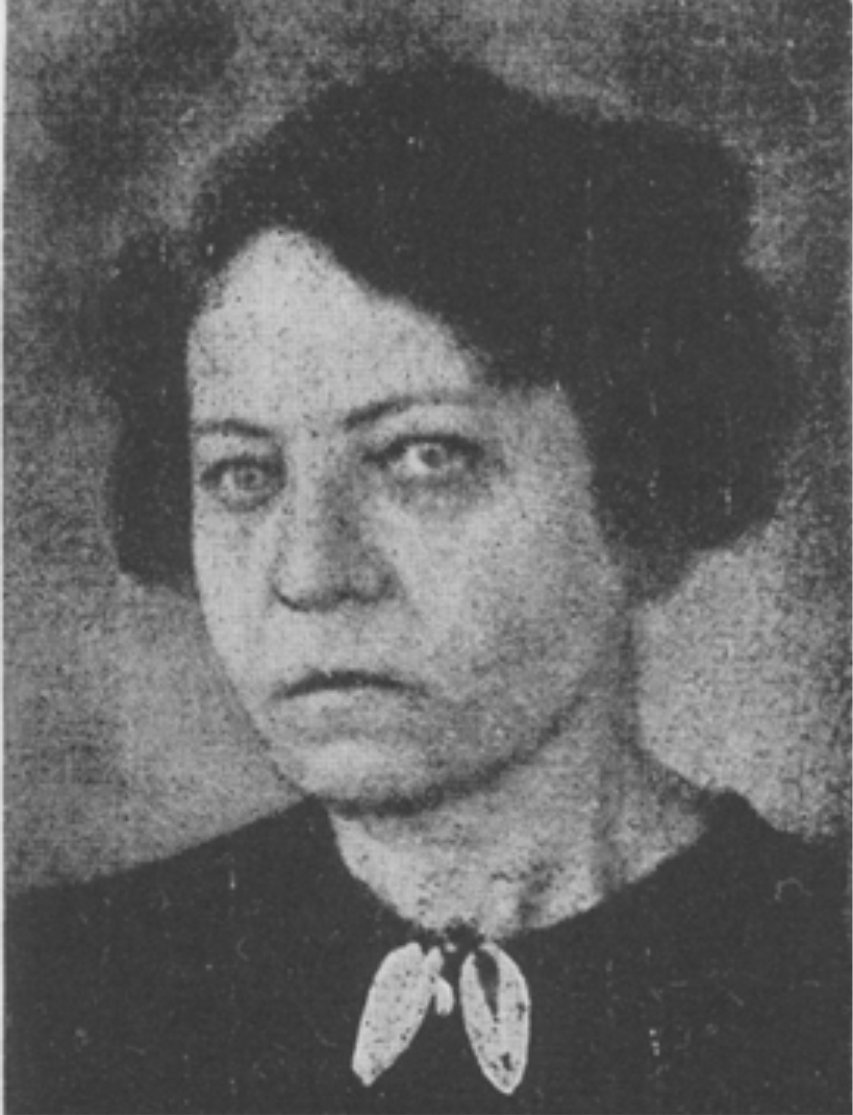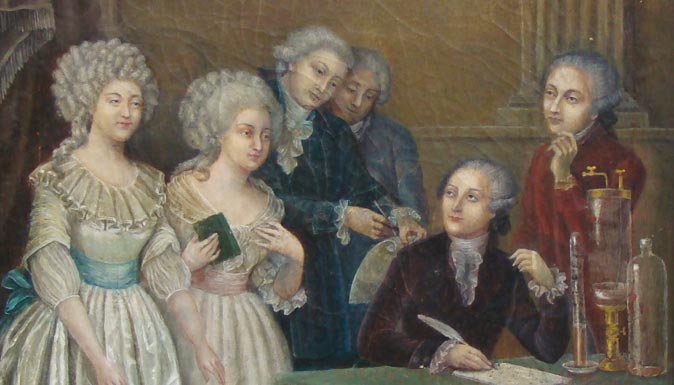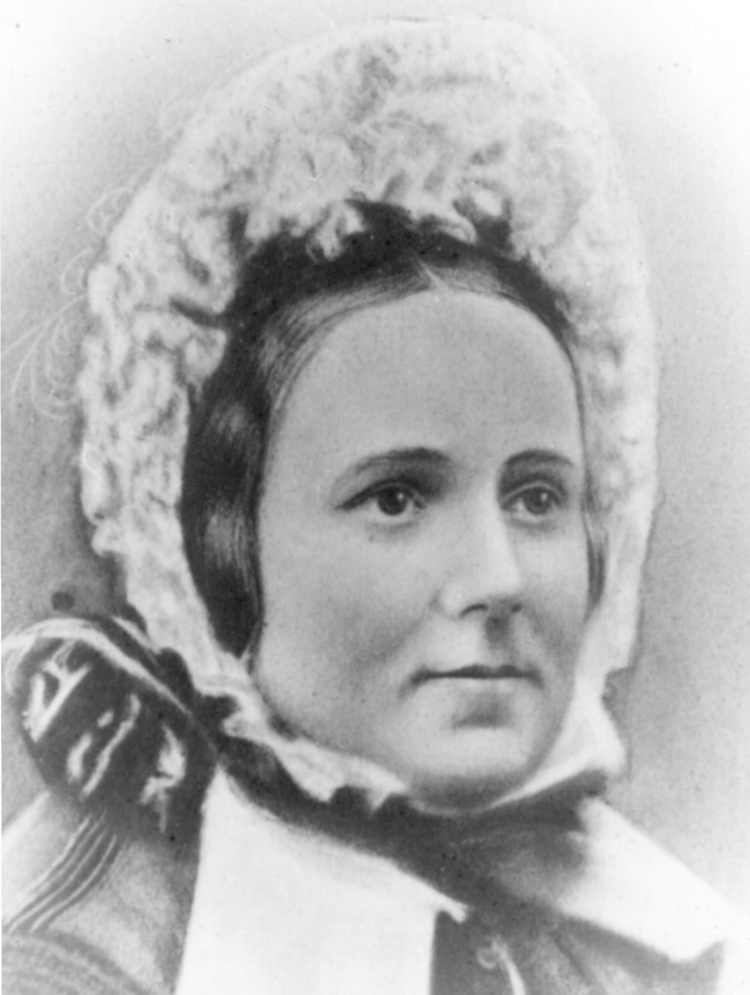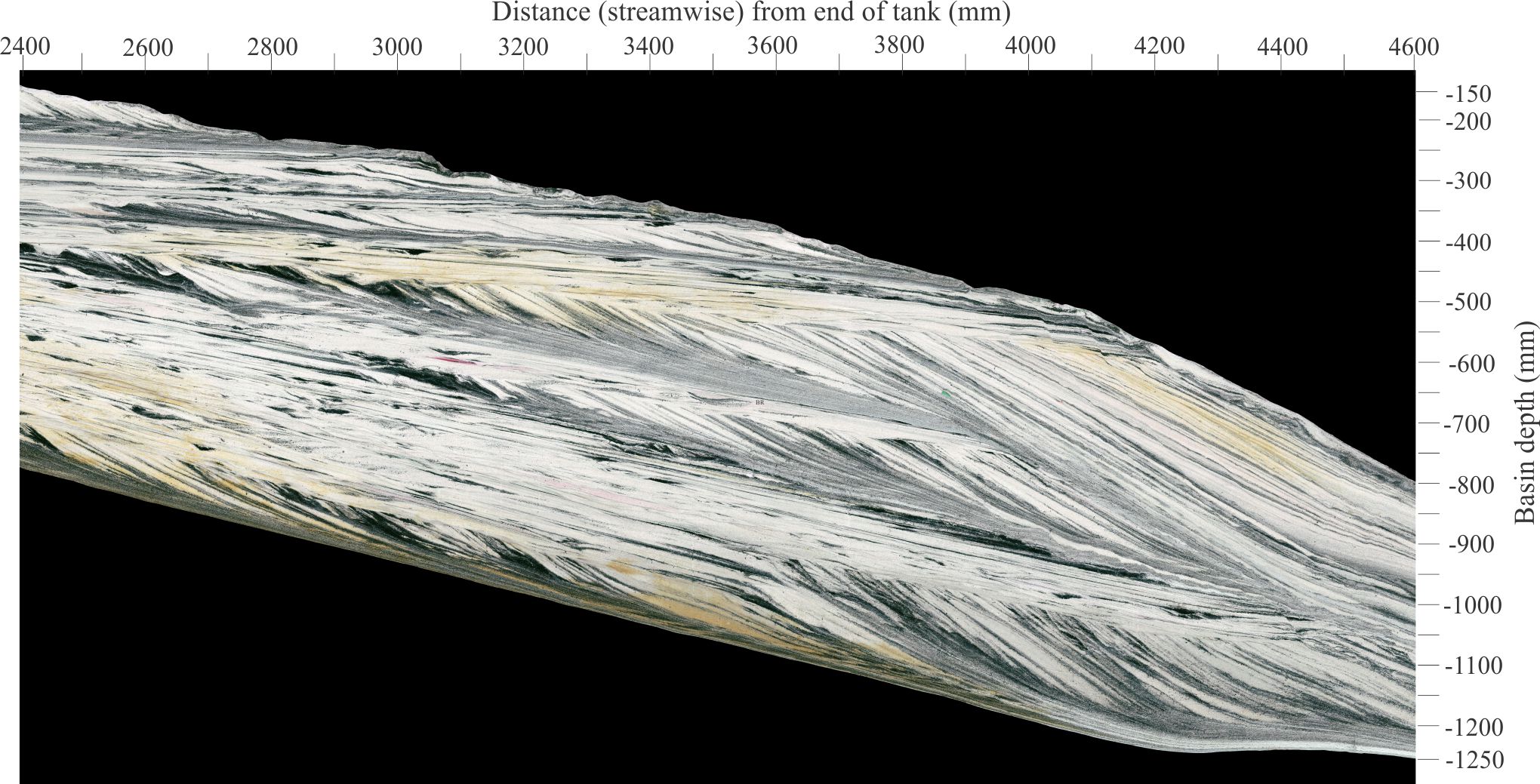
A series on clay minerals – their crystal chemistry, identification, formation
Clays belong to the phyllosilicate group of minerals, that also includes the micas (muscovite, biotite, phlogopite). The word element phyllo derives from the Greek phyllon, meaning leaf; it is also the root for the latinised filo, as in filo pastry, an appropriate etymology given the characteristic crystallographic platy, sheet, or leaf-like habit and perfect basal cleavage (normal to the c axis). The dominant cations are silicon (Si4+) that has coordination numbers 3, 4, 5, and 6, with 4 the most common (tetrahedral coordination), and aluminium (Al3+) with coordination numbers 4 and 6. In the phyllosilicates Si4+ is coordinated with oxygen (O2-) and hydroxyl anions (OH–).
Crystal structures
The molecular foundations of clay crystal structures are described by two basic geometric forms: tetrahedra and octahedra. Each is based on the arrangement of cations and their coordination with anions (O2- and OH–). Note that the graphical representations as polyhedral geometric forms are figments, intended to simplify the complex phyllosilicate crystal structures.

Tetrahedra
The basic structure shows a silicon cation bonded to 4 oxygens. A single tetrahedron (SiO44-) has a net charge of -4. The three oxygen anions at the base of the tetrahedron are shared with adjacent tetrahedra. The dominant cation is silicon, but aluminium (Al3+) may substitute and in this case the additional negative charge must be accounted for elsewhere in the crystal lattice. The Al3+ in this case has 4-fold coordination.
Octahedra
The representational geometric form is an octagon where a central cation is bonded to 6 hydroxyl (OH–) and/or oxygens (O2-) anions. The cation is typically Al3+ that in this structure has 6-fold coordination, but common substitutes include Mg2+, Fe2+, and Fe3+. The net charge for hydroxyl-filled octahedra is -3. Octahedra are larger structural units than tetrahedra, based on coordination number and cation radii; this becomes important when fitting tetrahedral and octahedral layers together.
Clay sheets
The fundamental molecular structures are joined in tetrahedral and octahedral sheets; each sheet is a single tetrahedron or octahedron thick. Tetrahedral sheets are formed when oxygens at the basal three corners of each tetrahedra are shared with neighbouring tetrahedra. The apical oxygens are available for sharing with octahedral sheets. A single, unique unit within a tetrahedral sheet contains 4 silicon and 10 oxygen ions (Si4 O10) with a net charge of -4; Al3+ may substitute for Si. These units repeat throughout the sheet.
In octahedral sheets, two hydroxyl or oxygen anions along an octahedron edge are shared with the edge of a neighbouring octahedron. All the cations are coordinated with 6 anions. If the octahedra contain hydroxyls, then the basic formula is (Al3+)4 (OH–)12 and the net charge is zero. Every anion in a sheet has three possible sites that can be bonded to cations – how these sites are filled depends on the cation charge (or valence) and the maintenance of zero net charge. Cations with a valence of 3+ (Al3+, Fe3+) that can only fill two thirds of the available cation sites form dioctahedral sheets. Bivalent cations like Mg2+ and Fe2+ can fill all three available sites, forming trioctahedral sheets.
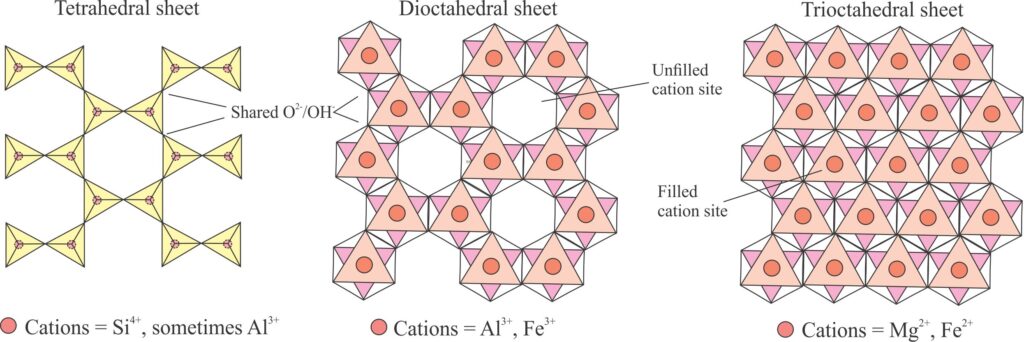
Clay mineralogy
1:1 layers
All crystalline clay minerals are formed by bonding tetrahedral and octahedral sheets in two basic arrangements. The simplest layer (1:1) involves the sharing of apical oxygens in a single tetrahedral sheet with two out of three oxygens in one plane of an octahedral sheet. The remaining sites in the octahedrons are occupied by hydroxyl anions. One-to-one layers characterize the kaolinite-serpentinite group of clay minerals and includes kaolinite, halloysite, and dickite. Cation substitution is more common in the octahedral sheet and any charge difference is compensated by hydroxyl anions so that the net charge is zero.
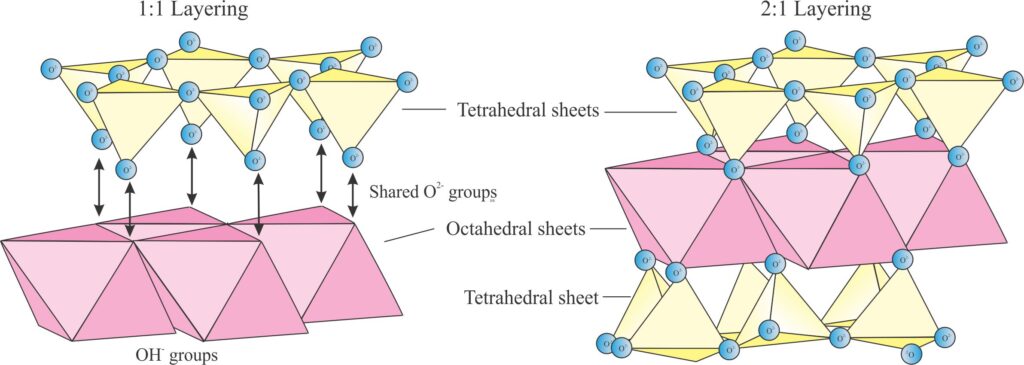
2:1 layers
The second basic layer structure is formed by adding a tetrahedral sheet to each face of an octahedral sheet, again by sharing the apical oxygen anions with octahedra; one of the tetrahedral sheets is inverted relative to the other tetrahedral sheet. Lattice distortion or rotation is necessary to accommodate the different dimensions of tetrahedra and octahedra, that results in some sheets gaining a net negative charge. Net electrical charges are compensated by cation substitution. In some clay groups, an hydroxyl sheet is inserted or interlayered between 2:1 layers; these are the expanding clays that comprise the smectite group.
Cation Exchange Capacity (CEC)
The number of cations and the ease with which they can be exchanged within clay crystal lattices is called the cation exchange capacity. Cations, because of their positive electric charge, will be attracted to crystal surfaces that have negative charges. Thus, the CEC depends on the structure of the clay sheet or layer surface, and the available surface area. The common exchangeable cations include Ca2+, Mg2+, Fe2+, Mn2+, K+, Na+, and in soils NH4+. The relative CEC for the major clay groups is shown in the table below. The common units of measured CEC are c.moles/Kg (centimoles of positive charge/kg) and milli-equivalents/100 g (the two measures are numerically equivalent). The value of the cation charge is important – for example, a CEC of 10 c.moles/Kg means that 10 centimoles of K+ can be exchanged, but only 5 centimoles of Mg2+.
[One centimole = 10-2 moles]
Clay classification
Differentiation of clay mineral groups is based on layer type, layer net-charge and charge strength, cation substitution in the octahedral layers, and the cation exchange capacity. The principal groups include:
- Kaolin (non-expanding).
- Smectite (expanding).
- Mica, including illite and glauconite (non-expanding).
- Chlorite (non-expanding).
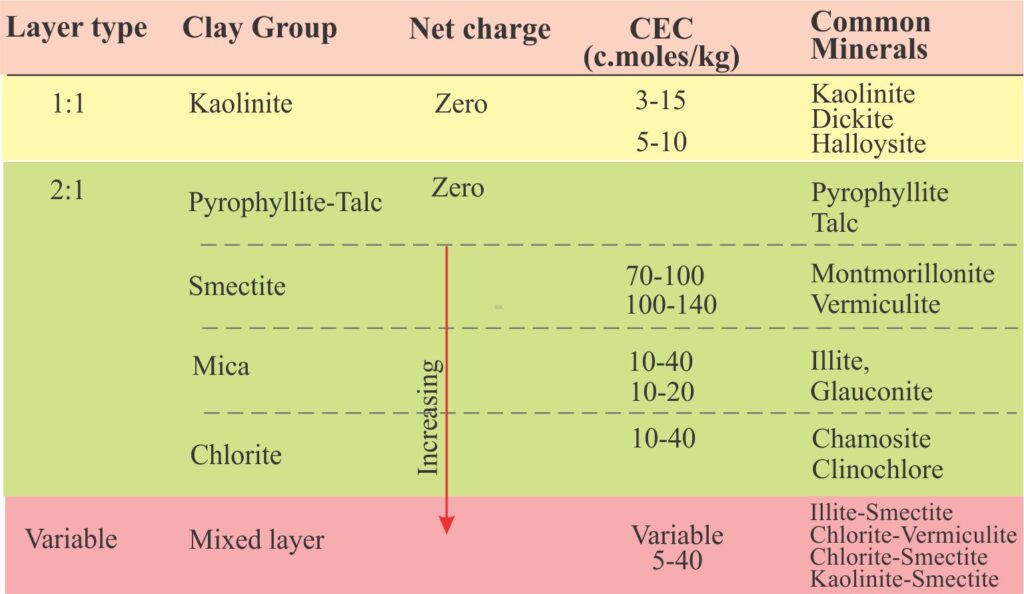

Crystal lattices in the kaolin group of 1:1 clays have no net charge, are non-expanding, and there is very little cation exchange except for some substitution of Si by Al. The most common representative in sedimentary rocks is kaolinite that typically exhibits mica-like, pseudohexagonal crystal plates (or ‘books’) stacked parallel to the crystal c-axis.
The smectite group of expanding lattice clays, also known as swelling clays, are formed by inserting layers of hydrated cations and water molecules between the 2:1 layers; the group contains dioctahedral and trioctahedral mineral species. Common minerals include dioctahedral montmorillonite, and vermiculite that incorporate both di- and trioctahedral sheets. Cation exchange in the octahedral layer is common, and substitution of Si for Al also occurs in the tetrahedral layer.
Illite as part of the mica group of phyllosilicates, is a non-expanding 2:1 clay in which potassium (K) is strongly bonded to oxygens in tetrahedral hexagonal sites – the strength of these bonds prevents interlaying by water.
Chlorite species are also interlayered 2:1 minerals where the tetrahedral sheets are separated by sheets of hydroxides – for this reason they are also called 2:1:1 structures. The common forms chamosite and clinochlore incorporate trioctahedral sheets, but dioctahedral chlorites also occur.
There is also an important group of clays in which tetrahedral and octahedral layers are mixed, either sequentially (ordered) or randomly. The mixed layer group commonly includes combinations of illite, chlorite, and any of the smectites.
Other posts in this series
Mineralogy of the common clays
